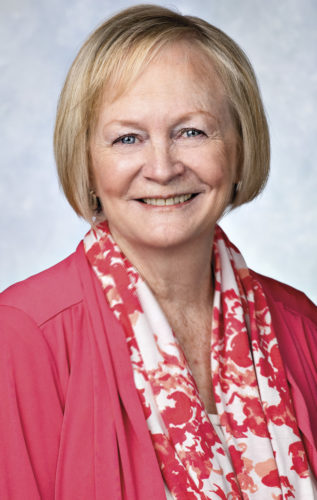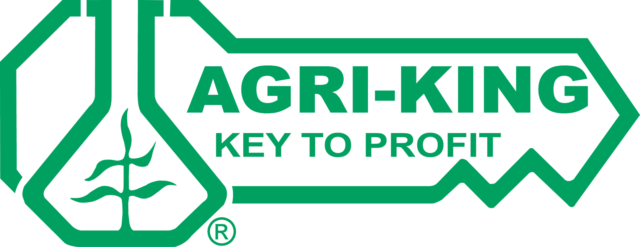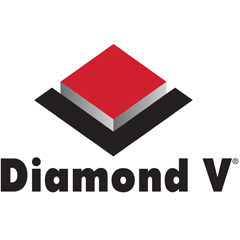He had an unproven idea for a production plan to change the home ranch’s herd genetics and no concrete marketing plan. But he had to start somewhere – one thing at a time.
Line’s grandfather purchased the home place in Miller, Nebraska, from the railroad and began raising Shorthorns.
His father moved toward Herefords and had a 250-head commercial herd of Angus and Hereford cows.

But Darby Line wanted to try Simmental and Angus seedstock. He already had a few cows, but he frankly didn’t know if it would work to shift the herd to a different breed, and black Simmental cattle at the time were an unknown and certainly unproven in the marketplace. It was just an idea.
Line’s reasoning was this: “I wanted the Simmental to grow quickly and finish fast so we could get them to market quicker, not for a bigger frame necessarily.
The Angus brings the carcass quality and calving ease. The Angus and Simmental combination complement each other well.
The Simmental brings a little bit more growth and a little bit more power to the herd. Both are maternal breeds.”
Line’s father told him that he’d buy some Simmental bulls if Line wanted to raise them, so Simmental was introduced to the pastures.
More genetic strategies
Line had learned A.I. before leaving college and has continued to do all the A.I. on the ranch to build the herd genetics.
As the production plan matured, Triangle J began using embryo transfer and now uses 200 recipient cows per year.
Line says, “Just about all the commercial cows we have now are used as recipient cows. The entire herd is used toward the purebred program.”
Managing the cow herd through summer pasture and winter cornstalk grazing became a juggling act. In January, the cattle are divided into three groups.
The first group of early calvers is brought to graze cornstalks near the home place during calving season, then kicked back out onto cornstalks after calving, supplemented with an alfalfa and silage mix.
The second group is brought home in February and the third group in March. April brings the beginning of A.I. season, when cows are turned back out to graze until the beginning of May.
From May to October, the cows are on open-grazing pasture systems, running in 85-cow to 90-cow herds on bluestem and buffalo grass and later cool-season brome.
From October to January, the cattle graze cornstalks on neighboring fields until calving season starts again.
Getting the word out
With education and, then, production plans in place, Line began to develop the marketing plan – the hard way.
“After graduation I went around like a door-to-door salesman to let people know I had commercial Simmental bulls for sale.
Our neighbors and friends were very good to me and helped me get started.” It may have been successful, but it certainly wasn’t ideal. It was time to develop the marketing plan.
So 23 years ago, Line determined to host his own on-site production sale. His first sale was a silent auction.
Line says, “I was fascinated with bull sales as a kid: the sale process and the amount of money changing hands in the bull business.

It wasn’t until later I learned there were a lot of expenses that went along with the big sales.”
Out of necessity, details of the first few production sales were handled exclusively by Line and his wife, Annette. Twenty-three years later, Darby and Annette still handle most of the sale arrangements themselves, opting not to hire a sales manager.
Line insists, “It’s such an important part of our operation that I hated to turn it over to anybody else, and I just felt that my wife and I needed to take care of that.”
They do hire out a few of the functions, like photographing the animals for the catalog. Each production sale offers 175 to 200 bulls, targeting commercial producers but also selling to purebred breeders.
Open females are sold by private treaty in the fall and early winter. The ranch keeps the top end of the heifers for breeding. Another 30 to 50 bulls are sold by private treaty from January to the middle of May.
Holding the bull sale in January has posed logistical challenges for the ranch. The sale barn doubles as a calving barn, and calving begins in January.
Line says it’s a circus sometimes tearing down the calving pens, installing the sale ring and bleachers, then tearing that down to set up the calving pens again almost before buyers leave the ring.
The sale growth pace has been challenging, as well, and keeping up with demand has meant building a new calving barn this year.
More to manage
As the production and marketing plans have matured, Line hasn’t tried to make the operational decisions alone.
Because Triangle J sits between two distinctly different, contrasting soil types – the Sandhills and the valley’s black, highly fertile, clay soils – any field might have a mixture of soils in it and be completely different at the other side of the field.
So Line hires an agronomist to handle soil sampling and fertilizer recommendations. He also hires a nutritionist to analyze the silage, alfalfa, corn shucks and grain ration to background the steers and heifers.
In addition, he hires good employees, each with a defined area of responsibility. His herdsman, Jeremy Cast, has been with the outfit for 10 years, and Chase Freeman helps with everything else.
Because of good employees, Line says his leadership style has changed. “We used to have day-to-day consultations with employees; then it went to weekly planning.
Now the employees largely take care of things without much input. In fact, the more I stay out of it, the better.”
Line says everyone coordinates the bigger projects, like A.I. or weaning, but he doesn’t have to be involved in the day-to-day activities anymore.
His role has become more geared to management, promotion and bookkeeping.
I asked Line what advice he’d give his oldest son, who will soon graduate from college with a diploma and, undoubtedly, a production idea or two of his own.
He was thoughtful for a few moments and said, “Our kids haven’t seen the tough times. I want them to understand that they’re going to have to prepare to deal with some tough times, too.”
Then he added, “I hope the cattle industry stays more independent with individual farms and ranches, as opposed to the corporate-type businesses that formed in the pig industry.
I hope my kids, if they want to come back someday, would be able to have their own one-owner type of thing instead of a corporate business, have their own family business. That’s what I’ve enjoyed.” ![]()
PHOTOS
TOP: Triangle J Ranch cattle
MIDDLE: Darby Line’s vision for Triangle J was to change the herd genetics by putting black cattle on the pastures at Miller, Nebraska, with Simmental-Angus cross.
BOTTOM: Newly weaned bull calves will be prepped for Triangle J’s annual production sale, held on the ranch each January, as well as by private treaty. Photos by Lynn Jaynes.









